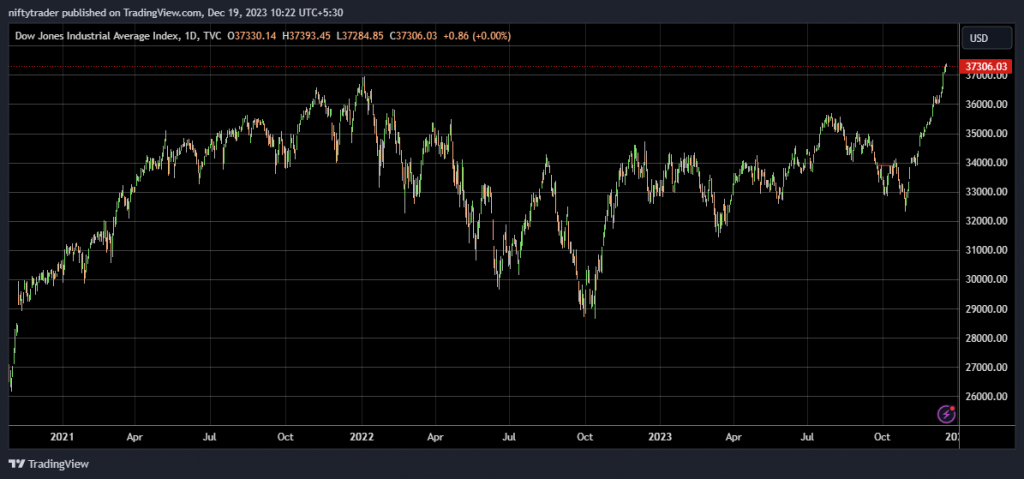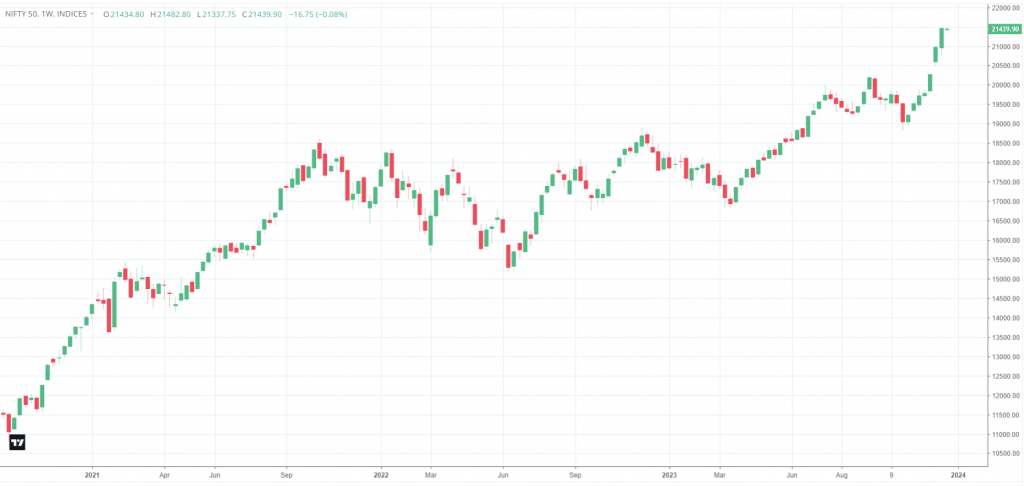
The Dow Jones Industrial Average (DJIA), also known as the Dow, is a widely recognized stock market index that measures the performance of 30 large publicly traded companies in the United States. It is considered one of the most popular market indices globally due to its longevity and historical significance. In this article, we will analyse the recent performance of the DJIA and its potential implications for other markets.
New All-Time High
The DJIA recently hit a new all-time high, reaching a staggering 37,600. Comparing this figure to just over a year ago when the index was at 28,000-29,000, it’s clear that the market has experienced substantial growth. Despite concerns and predictions of a U.S. recession by various analysts at the beginning of 2023, the market has defied expectations and continued its upward trajectory. In fact, it remained relatively flat during the first nine to ten months before experiencing a significant surge.

Unpredictability of the Markets
The stock market is notorious for its unpredictability, making it challenging for even the most seasoned analysts to consistently predict its movements. The recent performance of the DJIA highlights this fact, as the market’s behaviour has deviated from what many experts anticipated. The Federal Reserve’s decision not to raise interest rates further has contributed to the current market sentiment. Nonetheless, uncertainties remain regarding future rate cuts and how inflation will evolve. Such ambiguity makes it exceedingly difficult to predict market trends accurately.
Factors Influencing the Market
While the market’s behaviour may appear enigmatic, some underlying factors contribute to its movements. Market participants collectively shape market sentiment and drive certain expectations. In the case of the DJIA, it is the belief of investors that further interest rate cuts may be imminent, alongside the possibility of additional quantitative easing (QE). This sentiment is reflected in the market’s pricing, suggesting the anticipation of further money printing or injection of capital.
US Market as a Global Indicatoractor
The US market, often referred to as the “mother market” due to its prominence and status as the largest consumer block globally, plays a crucial role in shaping global market dynamics. When the US market thrives, it frequently leads to positive outcomes for other markets, particularly those dependent on exporting to the US. Consequently, with the DJIA achieving record highs, it is reasonable to infer that other export-oriented markets, such as India, may experience similar positive trends.
Implications for Indian Markets

Given the positive trajectory of the DJIA, there is no concrete reason to expect a reversal of fortune in Indian markets. While there may be temporary pauses or consolidation, Indian markets have been leading the way, breaking through significant milestones before their US counterparts. The Nifty, India’s benchmark index, has already surged above 20,000, outperforming expectations and showing signs of further growth. Therefore, the outlook for Indian markets appears favourable, aligning with the global market trends set by the DJIA.

If you have any questions, please write to support@weekendinvesting.com








